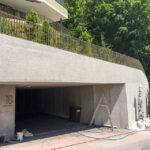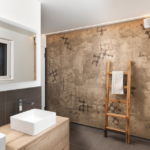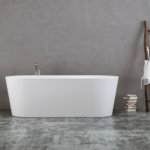- Home
- Competencies
Facade construction




- Service
- About Us
- Contact
Headquarters in Emmen
-
MVM AG
Kirchfeldstrasse 44
6032 Emmen - 041 289 04 04
- mail@mvm-ag.ch
-
Monday - Friday
08:00–12:00 / 13:30–17:00
Zug location
-
MVM AG ZG
Commercial Street 11
6330 Cham - 041 758 18 57
- mail@mvm-ag-zug.ch
-
Monday - Friday
08:00–12:00 / 13:30–17:00
Sursee location
-
MVM AG Sursee
Surentalstrasse 10
6210 Sursee - 041 920 35 15
- mail@mvm-ag.ch
-
Monday - Friday
08:00–12:00 / 13:30–17:00
Stans location
-
MVM AG Stans
Hansmatt 30
6370 Stans - 041 610 00 42
- mail@mvm-ag.ch
-
Monday - Friday
08:00–12:00 / 13:30–17:00
-
MVM AG
- Rental
- Shop
Repair interior plaster
- Competently. Innovative. Qualitatively.
- from MVM AG
- 2. February 2022
Plaster new over existing ones plaster - is that possible? We provide answers and help you to make the right decision. Even plastered walls lose their shine and radiance over time. But does old plaster really have to be removed, or can the interior plaster be repaired? Removing old plaster is tedious work that takes a lot of time and is not necessarily fun. In certain circumstances you can touch up existing interior plaster without having to remove the existing layer of plaster. We will clarify when this possibility exists!
Why plaster at all?
Plaster has not only an aesthetic meaning. Because it regulates the room climate and insulates facades against heat loss and the associated increase in heating costs. Various types of plaster are possible indoors. You can choose between clay plaster and gypsum plaster or opt for clay-gypsum plaster or lime plaster. You can also apply a lime-cement plaster or make it easy with brush plaster, mineral ready-made plaster and synthetic resin plaster. Which variant you choose depends on the existing subsurface and your requirements for the room climate. The fact is that plaster is usually the better choice than paper or non-woven wallpaper. Because it ensures that your walls remain open to diffusion and at the same time have a modern look.
A big advantage of wall plaster in interiors is based on the possibilities to give the walls an individual structure. Plaster can be painted over several times, which means you can easily and stylishly adapt the wall color to your current requirements. In addition, a plastered wall does not become "unfashionable", as can be the case with patterned and structured wallpaper, for example.
Touching up the interior plaster – under these circumstances it is possible
If there are holes or cracks in the plaster, you should touch up the interior plaster and restore the desired aesthetics. Whether the existing plaster can be re-plastered depends mainly on the condition of the plaster substrate. If the ground is solid, stable, dry and clean, you can touch up the existing interior plaster. You don't have to remove it before refinishing the walls. If you have previously opted for rough plaster and now want to touch it up, you must first use the plaster plane and create a smooth surface. The old roughcast is then smoothed with adhesive plaster and treated with an adhesive primer. After the preparation, you can touch up the interior plaster by applying brush plaster, trowel plaster or new rough plaster.
The finer the plaster on the wall, the less time it takes to prepare it. With all coarse and rough plaster, the surface should be smoothed meticulously. This is the only way to improve the existing interior plaster and achieve a stylish, high-quality and value-enhancing look in your premises.
MVM - painter & plasterer with passion
If you choose MVM, you choose a company that is there for you every day with 140 employees and 20 apprentices. Thanks to many years of experience in plastering and painting, MVM is a contact whose skills you can trust. Our experts will be happy to advise you on how to repair existing interior plaster and plaster your premises in a modern way.
Would you like to improve your existing interior plaster? then Arrange a non-binding consultation now and learn what MVM can do for you!
























